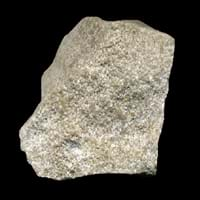Definition
Oolite is a sedimentary rock formed from ooids, spherical grains which are composed of concentric layers of calcite
Basanite is a black basaltic rock which mainly contains plagioclase, augite, olivine and nepheline and is formerly used as a touchstone
Discoverer
Unknown
Unknown
Etymology
From oo- + -lite, after German Oolit. A rock consisting of fine grains of carbonate of lime
From Latin basanites + -ite
Class
Sedimentary Rocks
Igneous Rocks
Sub-Class
Durable Rock, Medium Hardness Rock
Durable Rock, Hard Rock
Group
Volcanic
Not Applicable
Other Categories
Fine Grained Rock, Opaque Rock
Fine Grained Rock, Opaque Rock
Texture
Clastic or Non-Clastic
Aphanitic to Porphyritic
Color
Black, Blue, Brown, Cream, Green, Grey, Pink, Red, Silver, White, Yellow
Black, Brown, Green, Grey, Red, White
Durability
Durable
Durable
Scratch Resistant
Yes
Yes
Appearance
Rounded and Rough
Glassy or Pearly
Interior Uses
Decorative Aggregates, Flooring, Interior Decoration
Decorative Aggregates, Homes
Exterior Uses
As Building Stone, As Facing Stone, Garden Decoration, Paving Stone
As Building Stone, Garden Decoration, Office Buildings
Other Architectural Uses
Not Yet Used
Whetstones
Construction Industry
Cement Manufacture, Cobblestones, Landscaping
Arrowheads, Construction Aggregate, Cutting Tool, Spear Points
Medical Industry
Not Yet Used
Not Yet Used
Antiquity Uses
Artifacts
Artifacts, Monuments
Commercial Uses
Creating Artwork, Jewelry, Used in aquariums
As a touchstone, Creating Artwork, Gemstone, In fire-starting tools, Manufacture of tools, Metallurgical Flux, Jewelry, To ignite fire, Used in flintlock firearms
Types
Not Available
Nepheline-Basanite, Analcite-Basanite and Leucite-Basanite
Features
Available in lots of colors, Generally rough to touch, Very fine grained rock
Clasts are smooth to touch, Easily splits into thin plates, Has High structural resistance against erosion and climate, Used as a touchstone
Archaeological Significance
Monuments
Not Yet Used
Used
Famous Monuments
Not Applicable
Data Not Available
Sculpture
Not Yet Used
Not Yet Used
Famous Sculptures
Not Applicable
Not Applicable
Pictographs
Used
Not Used
Petroglyphs
Used
Not Used
Figurines
Not Yet Used
Not Yet Used
Formation
Oolites form when layers of calcite are deposited around a sand grain or fossil piece and are rolled around in calm water, which makes them round.
Basanite is a fine-grained, hard rock that forms when bits of lava shoot out of volcanoes.
Mineral Content
Calcite, Chert, Clay, Dolomite, Quartz, Sand, Silt
Augite, Feldspar, Ilmenite, Olivine, Plagioclase
Compound Content
Aluminium Oxide, Ca, NaCl, CaO, Iron(III) Oxide, FeO, MgO
Potassium Oxide, Sodium Oxide, Silicon Dioxide
Types of Metamorphism
Not Applicable
Burial Metamorphism, Cataclastic Metamorphism, Contact Metamorphism, Regional Metamorphism
Types of Weathering
Biological Weathering, Chemical Weathering, Mechanical Weathering
Chemical Weathering, Mechanical Weathering
Types of Erosion
Chemical Erosion, Coastal Erosion
Chemical Erosion, Coastal Erosion, Glacier Erosion, Sea Erosion, Water Erosion, Wind Erosion
Grain Size
Fine Grained
Fine Grained
Fracture
Conchoidal
Uneven, Splintery or Conchoidal
Porosity
Less Porous
Highly Porous
Luster
Pearly to Shiny
Waxy and Dull
Cleavage
Non-Existent
Non-Existent
Specific Gravity
Not Available
2.5-2.8
Transparency
Opaque
Translucent to Opaque
Density
Not Available
2.7 g/cm3
Specific Heat Capacity
Not Available
Resistance
Heat Resistant, Wear Resistant
Heat Resistant, Impact Resistant, Pressure Resistant, Wear Resistant
Deposits in Eastern Continents
Asia
Brunei, India, Indonesia, Malaysia, Singapore, Thailand, Vietnam
Not Yet Found
Africa
Cameroon, Chad, Ghana, Kenya, Malawi, Sudan, Tanzania, Togo, Zambia, Zimbabwe
Uganda
Europe
United Kingdom
Germany, Hungary, Italy, Spain
Others
Not Yet Found
Greenland, Mid-Atlantic Ridge
Deposits in Western Continents
South America
Colombia
Bolivia, Brazil
Deposits in Oceania Continent
Australia
Adelaide, New Zealand, Queensland, Tonga, Victoria, Yorke Peninsula
New South Wales, New Zealand, Queensland, South Australia, Western Australia
All about Oolite and Basanite Properties
Know all about Oolite and Basanite properties here. All properties of rocks are important as they define the type of rock and its application. Oolite belongs to Sedimentary Rocks while Basanite belongs to Igneous Rocks.Texture of Oolite is Clastic or Non-Clastic whereas that of Basanite is Aphanitic to Porphyritic. Oolite appears Rounded and Rough and Basanite appears Glassy or Pearly. The luster of Oolite is pearly to shiny while that of Basanite is waxy and dull. Oolite and Basanite are available in black, blue, brown, cream, green, grey, pink, red, silver, white, yellow colors. The commercial uses of Oolite are creating artwork, jewelry, used in aquariums and that of Basanite are as a touchstone, creating artwork, gemstone, in fire-starting tools, manufacture of tools, metallurgical flux, jewelry, to ignite fire, used in flintlock firearms.










